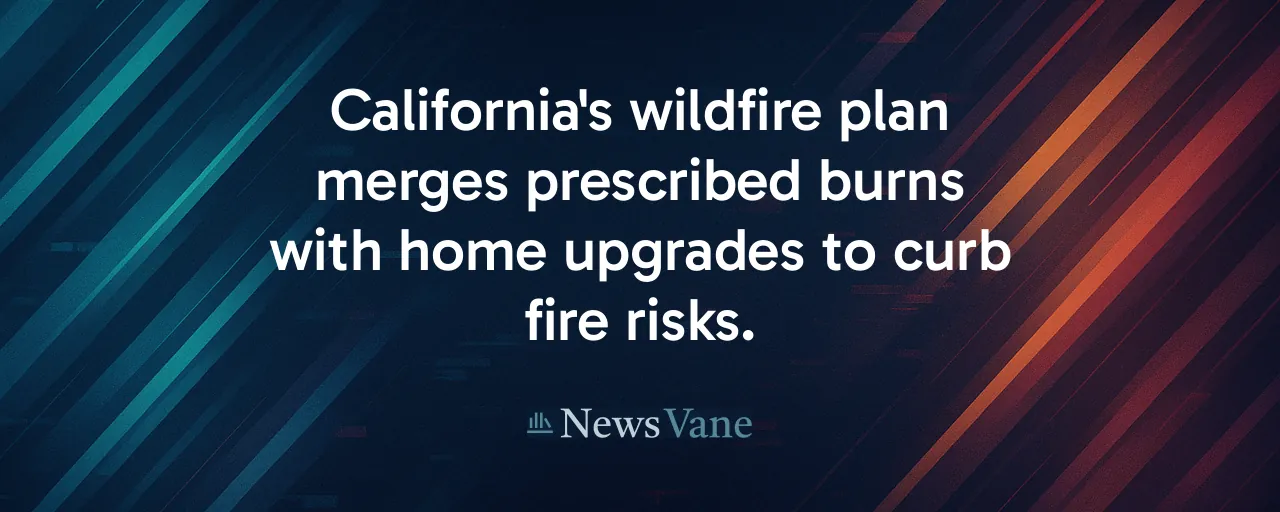A State on Edge
California braces for another brutal fire season. On July 1, 2025, Governor Gavin Newsom unveiled a sweeping wildfire prevention plan targeting federal lands, which cover fifty-seven percent of the state's forests. Dubbed 'Make America Rake Again,' the initiative arrives as flames threaten communities and smoke chokes the air. The announcement, streamed live on social media, responds to January's devastating Los Angeles firestorms, which razed over ten thousand structures.
The urgency is clear. Wildfires have become a grim annual ritual, fueled by drought, heat, and decades of forest mismanagement. Rising insurance costs and evacuations disrupt lives, while vulnerable residents face the worst impacts. Newsom's plan aims to break this cycle, but its success hinges on cooperation across fractured jurisdictions and a blend of proven strategies.
Forging a smarter, more resilient approach to a crisis that respects no borders is the true test for California. The plan emphasizes science-driven solutions, from prescribed burns to home upgrades, but questions linger about funding, execution, and public trust.
Why Fires Keep Winning
Wildfires don't play by rules. They tear through forests, suburbs, and ranches, driven by wind and fuel. Research from the National Fire Protection Association pinpoints a harsh truth: lack of funding and staff cripples prevention efforts. California's wildland-urban interface, where homes meet nature, keeps growing, with forty-five million U.S. homes at risk. January's Los Angeles fires alone caused up to one-hundred-sixty-four-billion dollars in losses.
History offers clues to the problem. For centuries, Indigenous tribes burned millions of acres annually to manage ecosystems. Twentieth-century policies stamped out those fires, letting fuel pile up. By 2018, mega-fires forced emergency state actions to clear vegetation. Today, federal budget cuts to agencies like the U.S. Forest Service strain resources, leaving states to pick up the slack.
No one fix works. Clear-cutting forests harms ecosystems, while climate-focused policies alone won't stop blazes now. Experts agree: a mix of fuel reduction, defensible space, and community planning is essential. California's latest plan bets on this balanced approach, but execution is everything.
A Science-Backed Game Plan
California's new strategy leans on evidence. Studies from the University of California and the California Air Resources Board show prescribed burns cut greenhouse gas emissions compared to uncontrolled wildfires. These controlled fires, alongside cultural burns led by Indigenous tribes, mimic natural cycles that keep forests healthy. Mixed conifer forests thrive with periodic low-intensity burns, though chaparral shrublands need careful handling to avoid damage.
Home hardening is another pillar. Homes built to post-2008 ignition-resistant codes are less likely to burn, per research. Grants for low-income residents to upgrade roofs or clear brush aim to level the playing field. Strategic fuel breaks along evacuation routes and modern building codes for new homes round out the plan. The plan prioritizes practical solutions, rooted in data rather than flash.
Still, challenges loom. Prescribed burns require skilled crews, perfect weather, and public buy-in to manage smoke. Mechanical thinning on steep slopes costs a fortune. Coordinating over two hundred firefighting entities demands seamless communication. The plan's success depends on bridging these gaps.
Who Pays, Who Acts?
Wildfires don't respect property lines, but land ownership complicates solutions. Federal agencies manage most of California's forests, yet state and local governments often bear the costs of fighting fires. Newsom's plan calls for shared responsibility, with state grants and federal partnerships to fund projects. Homeowners, too, face pressure to create defensible space, though incentives aim to ease the burden.
Money is a sticking point. Prevention costs billions less than fire losses, but funding gaps persist. Insurance companies, reeling from payouts, are pulling out of high-risk areas, leaving homeowners reliant on state-backed FAIR Plans. This shift could strain public budgets. Meanwhile, grants for local projects create jobs but need steady revenue to last.
Collaboration is critical. Firefighters, tribes, landowners, and environmental groups all have a stake. The plan pushes for interoperable data systems to sync efforts. If agencies and communities can align, California might outmaneuver its next big blaze.
Common Ground Emerges
Amid political noise, agreement is taking shape. Stakeholders back expanding prescribed burns near towns, creating fuel breaks for safer evacuations, and incentivizing home upgrades. Streamlined environmental reviews for urgent projects and cost-sharing between state and federal agencies also gain traction. These ideas balance immediate action with long-term resilience.
Bipartisan support is growing. After January's fires, lawmakers from both parties called for reforms. Proposals to modernize building codes and fund water infrastructure for firefighting cross party lines. Even contentious issues, like logging or climate bonds, find compromise in targeted, science-based projects that protect communities without gutting ecosystems.
The path isn't easy. Legal hurdles, like environmental regulations, can slow progress. Vulnerable groups, including low-income residents and farmworkers, need tailored support to recover from smoke and displacement. Yet the overlap in priorities offers a rare chance for unity in a divided state.
Looking Ahead
California's wildfire plan is a bold step, blending science, teamwork, and pragmatism. It tackles a crisis that has burned through budgets, homes, and trust. By prioritizing prescribed burns, home hardening, and cross-agency collaboration, the strategy aims to save lives and landscapes. But plans on paper mean little without action.
The real test lies in execution. Can California secure funding, train crews, and win public support? Can it navigate legal and political barriers to act swiftly? The answers will shape whether communities stand stronger against the next fire or face another season of loss.
For now, hope flickers. If stakeholders seize this moment, California could redefine how it lives with fire, moving beyond just fighting blazes. The work starts today, and every acre treated, every home fortified, brings the state closer to a future where wildfires don't call the shots.
